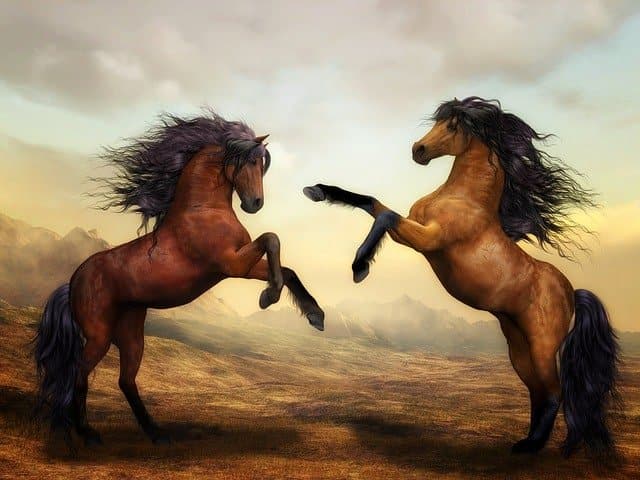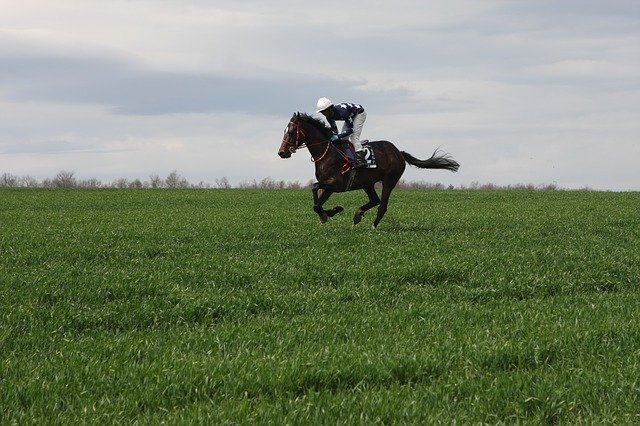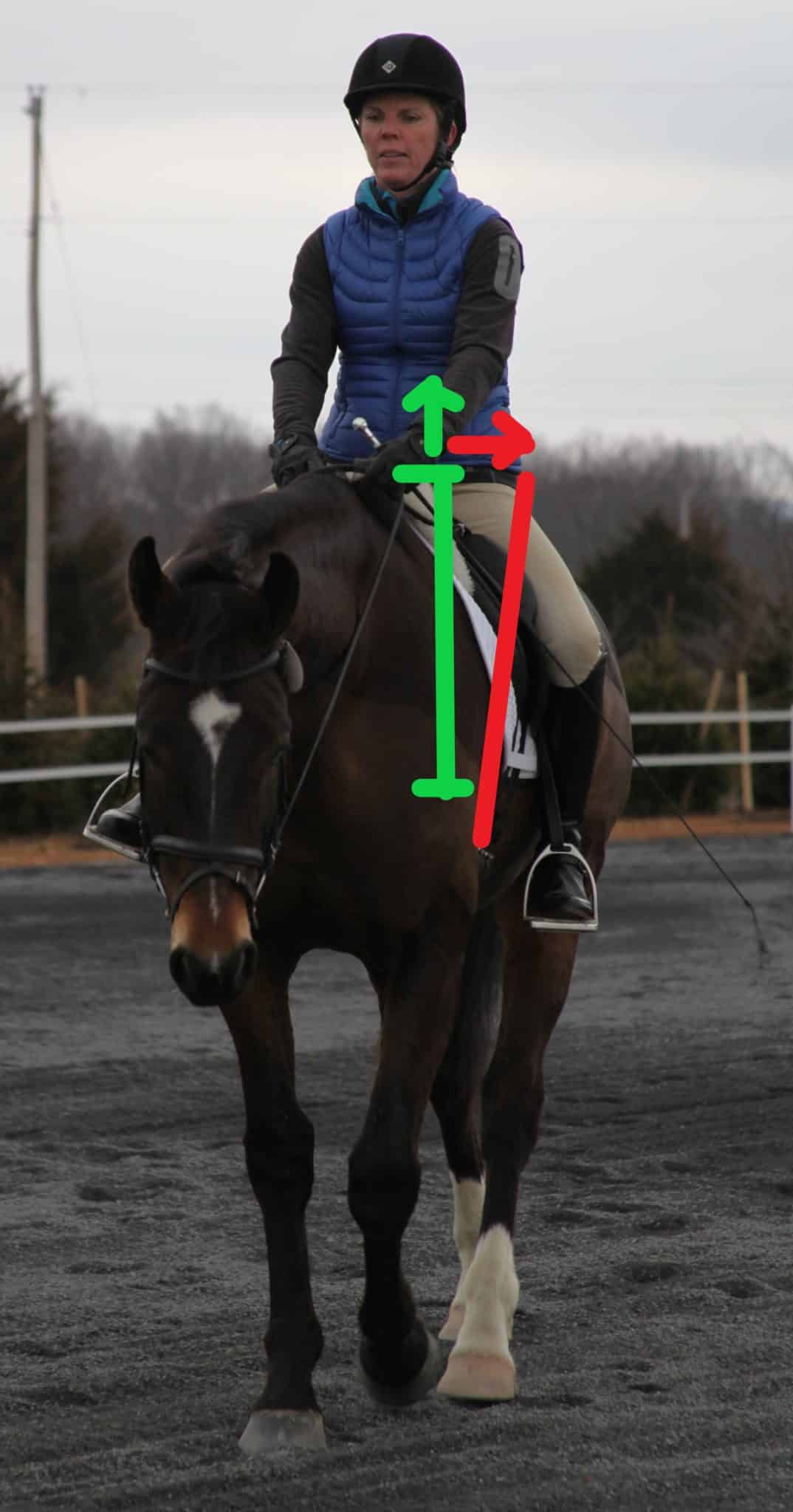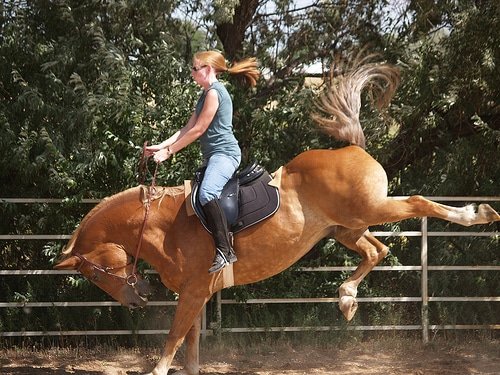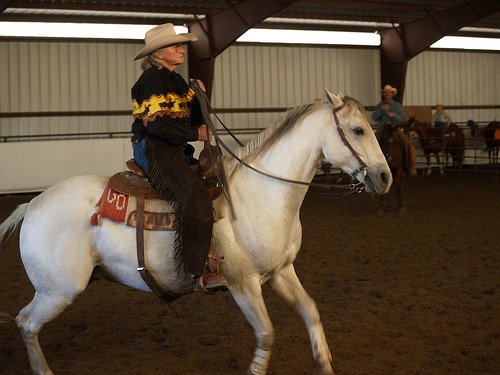
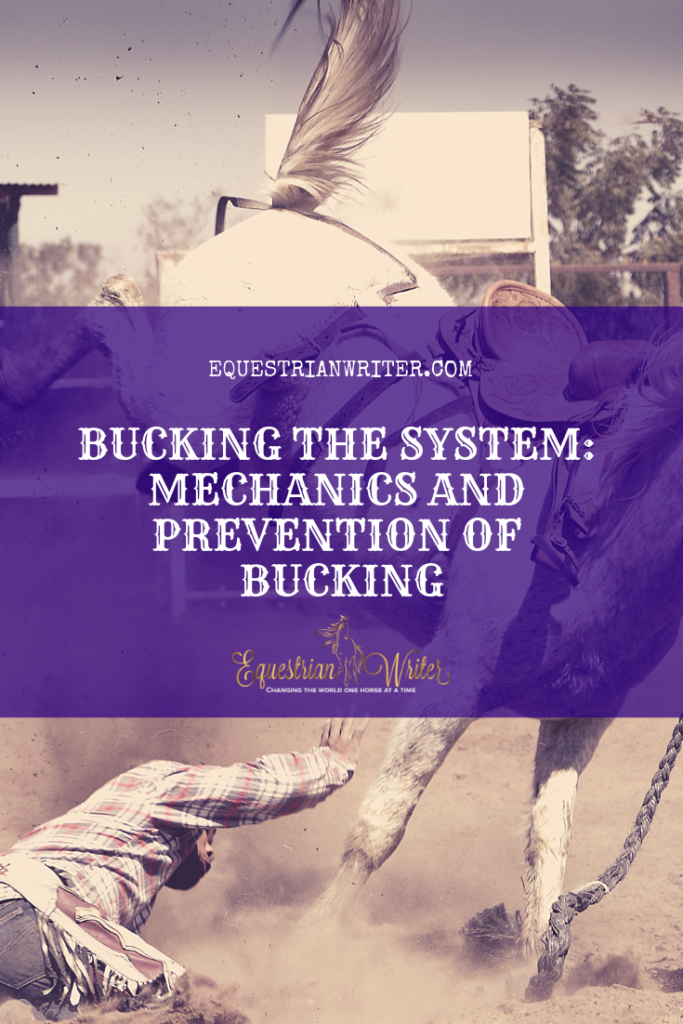
Bucking is arguably the most dangerous behavior a horse can develop. It can quickly become a habit if not addressed immediately. But, before you can understand how to stop your horse from bucking, you need to understand the mechanics and common causes behind bucking.
Three Rules of Mechanics for Bucking
The most important rule to remember about bucking is that a horse can only buck if he has all of his body parts in a straight line. His spine must be straight, putting his head, neck, shoulders, rib cage, and shoulders in perfect alignment.
Rule number two about bucking is that when one end comes up, the other end goes down. So, when he kicks his hind end up, he will jam his head down between his knees. This is vital for him to maintain his balance. This position gives him the power to kick out and really do some damage.
The third rule of mechanics that you need to remember about bucking is that the maneuver lacks significant forward momentum. Bucking requires the horse to draw both hind legs up under him at the same time to kick out.
[clickToTweet tweet=”The most important rule to remember about bucking is that a #horse can only buck if he has all of his body parts in a straight line. #247equestrian Read more about how to stop your horse from bucking here: ” quote=”The most important rule to remember about bucking is that a horse can only buck if he has all of his body parts in a straight line.”]
Signs of Bucking
- Suddenly becoming straight and stiff
- Lack of forward momentum
- Over-exaggerating lifting the back
- Head shaking
- Balking
- Falling on the forehand
- Grabbing the bit and jamming his head between his knees
How to Prevent Bucking
As soon as these signs start to present and you suspect a bucking episode is imminent, it is vital that you take action immediately. Drop whatever you were doing and establish a brisk, forward, extended trot on a circle.
I choose the extended trot because it requires the hind legs to move independently of each other while maintaining forward momentum. The canter is a bad idea because it allows the horse’s back legs to move together while tracking up under himself, making it much easier for him to get into a position to kick out and buck. Remember, a buck requires the horse to draw both back legs up under him at the same time. Cantering encourages this while the extended trot discourages this.
The Dangers of the Canter
Many horses, especially western horses, tend to lower their heads further in the canter. This is not the time to be practicing long and low. Again, remember the mechanics of bucking that we discussed. If the front end goes down, the back end comes up. If is much easier for a horse to fall on the forehand in a canter. And extended trot requires a lifting of the shoulders independently of each other and makes it much harder for the horse to get his head down between his knees.
Establishing a circle is also vitally important because bucking requires the horse to have all of his body parts in a perfectly straight line. A circle is one big leg yield with constant bend through the rib cage. It doesn’t have to be pretty circle to be effective. All that matters is getting enough bend and maintaining enough forward momentum in the extended trot to keep him occupied. That inside hind leg needs to be tracking up under him, making it impossible for him to get into position to buck.
When all else fails…
If the circle fails, just do what you can to keep those body parts moving. Do leg yields, shoulder in, shoulder out, figure eights, or really anything you can do you keep him bending and moving. Always keep his nose tipped to one side or the other. Maintain that extended trot just keep him moving every way but straight.
Stopping the Bucking Once It Has Already Started
An ounce of prevention is always worth a pound of cure, but sometimes even the best of us miss the warning signs. So, you need to be prepared to handle the situation if you miss the signs — or your preventative measures fail — and the horse starts bucking anyway.
Disengage those hindquarters. This is also known as turning on the forehand. Your horse should already know this. If he doesn’t, check out this article on teaching your horse to disengage his hindquarters. This is a basic exercise that every horse should know for safety purposes. Your horse’s hindquarters is his engine. Shut off the engine and you shut down the runaway train.
That being said, be careful. Tip his nose to one side, but don’t try to snatch his head away! If you jerk his head away and overbalance him while his butt is in the air, he will fall — most likely on top of you. Make sure you know how to do a proper emergency dismount so if you come flying off you are less likely to break something.
Cover Photo by Aidras






